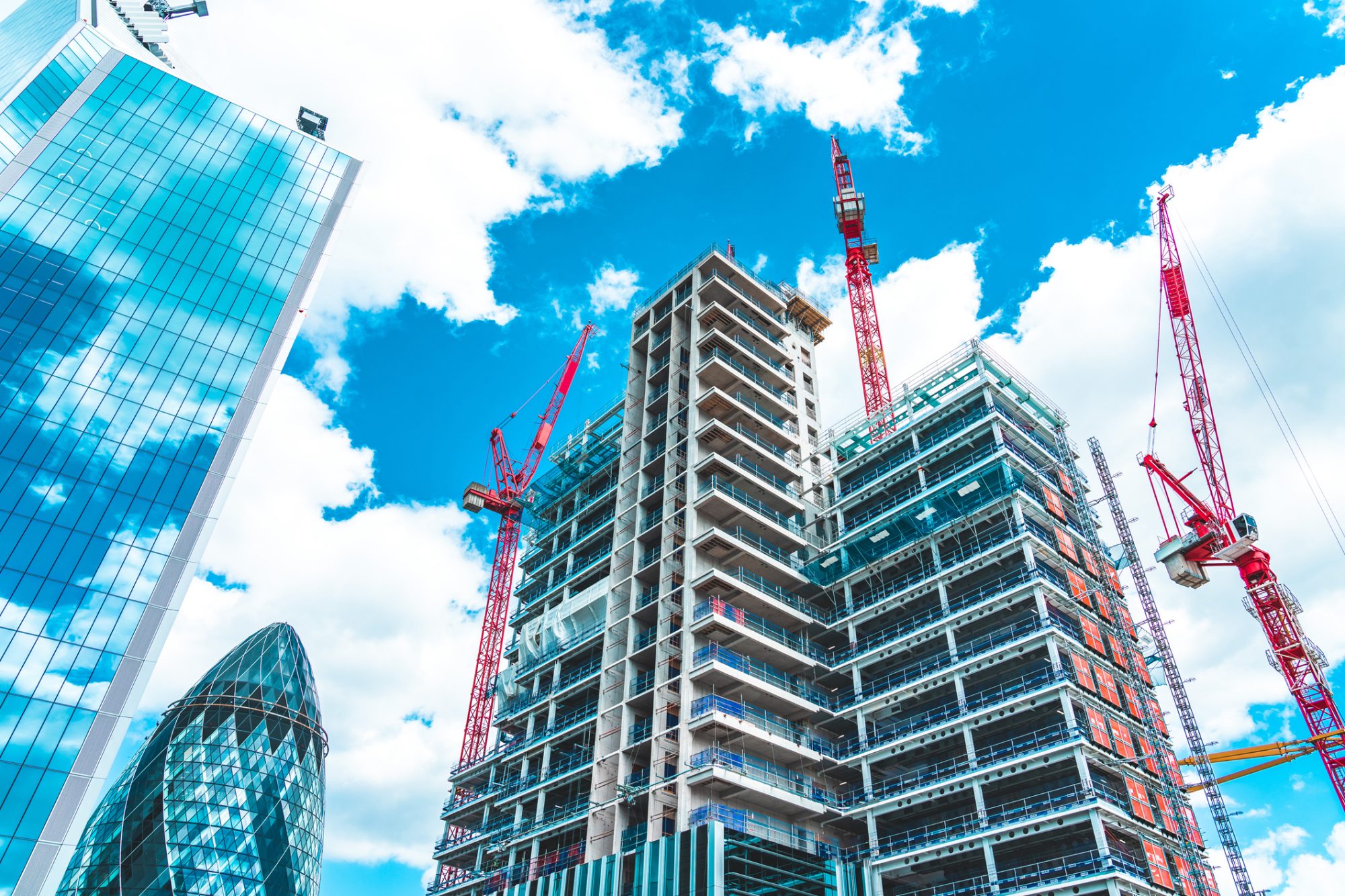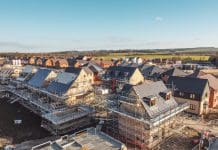Discover how modular integrated construction is revolutionising high-rise, high-density urban landscapes and the future of city-building
The rapid expansion of urban populations has necessitated the exploration and adoption of innovative, efficient, and sustainable construction methods.
Among these approaches, Modular Integrated Construction (MiC) is emerging as a potentially transformative solution. This progressive method involves the off-site manufacturing of building components that are subsequently transported to the site for assembly.
The application of MiC addresses various challenges associated with conventional construction practices in bustling cities. It offers benefits such as time efficiency through reduced construction duration, waste minimisation owing to pre-fabrication processes, and enhanced quality control measures.
Despite these advantages, there are barriers to its widespread implementation that must be addressed for successful integration into urban development projects.
Understanding the basics of modular integrated construction
Investigating the fundamentals of Modular Integrated Construction (MIC) reveals its potential for revolutionising construction processes in high-rise, high-density urban environments.
At its core, MIC is a construction method that leverages prefabrication and automation to enhance construction efficiency. Manufacturing building modules off-site under controlled conditions and then assembling them on-site not only streamlines the production process, but also allows for simultaneous multi-level construction leading to significant time and cost savings.
It also promotes sustainable practices within the construction industry. By minimising material wastage through precision engineering and reducing on-site disruptions owing to less noise and dust during assembly, MIC contributes positively toward environmental sustainability.
Moreover, this approach helps lessen the carbon footprint by curtailing heavy machinery usage on site and decreasing overall energy consumption during both production and assembly stages.
Furthermore, the design flexibility inherent in MIC makes it an attractive option for architects working in high-density cities where space is at a premium.
Prefabricated modules can be designed with varying dimensions according to project requirements while maintaining aesthetic appeal. This ability to customise provides architects with greater freedom in their designs without compromising structural integrity or safety standards.
This also enhances project scalability enabling efficient execution of both small-scale residential projects and large-scale commercial developments using the same modular methodology.
Additionally, adopting such innovative methodologies underscores a commitment towards environmentally conscious practices that not only benefit stakeholders, but also contributes significantly towards broader societal goals of sustainability.
Reducing construction time with off-site fabrication
By shifting much of the building process to a controlled factory environment, this approach enables uninterrupted work, regardless of outdoor weather conditions or site limitations commonly encountered in high-density cities.
How does MIC improve on traditional construction processes?
| Traditional Construction | Modular Integrated Construction |
| On-site assembly leads to unpredictable delays due to weather or other external factors | Factory-controlled process ensures steady progress irrespective of external factors |
| Requires more time for on-site rectification due to inconsistent quality | Standardised factory production optimises control over quality |
| Longer project timeline due to sequential execution | Parallel activities in factory and on-site accelerate overall project delivery |
| Larger workforce needed on-site potentially causing safety concerns | Smaller on-site team enhances safety management |
| High-levels of waste generated from site-based activities | Offsite fabrication promotes resource optimisation, reducing wastage |
Streamlining processes and optimising resources through off-site fabrication could very well be the key to addressing the pressing demands of rapid urbanisation in high-density cities.
Minimising waste and risk through pre-fabrication
Harnessing the power of pre-fabrication in construction projects paves the way for significant waste reduction, as it allows meticulous control over material quantities and minimises excessive resource consumption.
This factor is particularly critical in high-rise, high-density cities where space and resources are at a premium.
In addition, this method leads to improved cost efficiency through reduced need for disposal services and potential resale or recycling of excess factory-produced materials rather than disposing them as construction debris.
Improved safety is another notable advantage offered by pre-fabrication. Construction activities conducted in a controlled environment can notably reduce workplace accidents often associated with conventional high-rise building processes such as falls from height or injuries from falling objects.
Overcoming challenges in urban development
Overcoming the obstacles in urban development requires innovative approaches that embrace efficiency, quality, and sustainability. As modern cities continue to expand upwards and outwards, traditional construction methods are increasingly unable to meet the demands of high-rise high-density environments.
Implementing modular integrated construction (MIC) in these circumstances provides a viable alternative that promotes not only faster project completion but also better building quality. Alongside this, careful urban planning strategies need to be employed to ensure effective use of space while respecting the natural environment.
How does MIC benefit urban planning strategies?
- Urban planning strategies: Innovative urban planning strategies are crucial for optimising land use in high-rise high-density cities. By integrating MIC into these plans, it is possible to boost construction efficiency and reduce disruption caused by traditional on-site building practices.
- Sustainable construction practices: The adoption of MIC allows for sustainable construction practices such as waste minimisation and energy efficiency during fabrication processes. This method also promotes resource conservation by enabling materials reuse and recycling.
- Smart city infrastructure: With its inherent flexibility and adaptability, MIC supports the development of smart city infrastructure which includes buildings with smarter systems like automated heating or cooling systems, thus enhancing overall livability.
- Affordable housing solutions: Lastly, due to cost-effectiveness from reduced labor costs and increased productivity from offsite manufacturing under controlled conditions, implementing MIC can lead to affordable housing solutions.
MIC could be key to sustainable, affordable housing
With cities becoming increasingly vertical and dense, MIC provides a viable alternative to traditional building methods, offering speed, efficiency, and environmental benefits.
One key issue that urban areas face worldwide is affordable housing. Here again, implementing MIC potentially leads towards a solution. By cutting down on both time and costs associated with construction processes through prefabrication methodologies, developers can pass these savings along to end-users – resulting in more affordable housing options for city residents. This cost-effective approach not only eases the burden on individuals looking for affordable accommodation but also aids governments working towards housing solutions for swelling urban populations.
The integration of MIC into urban planning could also revolutionise infrastructure projects within high-rise high-density cities. Infrastructure like roads or utility lines that usually take months or even years to complete using conventional methods could be produced more quickly with modular components made off-site then assembled on-site as required by project timelines or site conditions.
This streamlined process has potential implications across infrastructure sectors from transport systems to utilities networks – contributing positively towards efforts at improving living standards within densely populated urban spaces.
MIC could be key to sustainable urban development
In conclusion, the adoption of modular integrated construction in high-rise, high-density cities presents significant advantages. This method promises to enhance efficiency, reduce waste, and improve the quality of urban structures through off-site manufacturing techniques.
Potential objections to MiC may arise from concerns about its applicability in complex urban environments. However, initial case studies demonstrate successful implementation even amid these challenges. Therefore, embracing this innovative approach is paramount for sustainable urban development in our rapidly growing cities.














